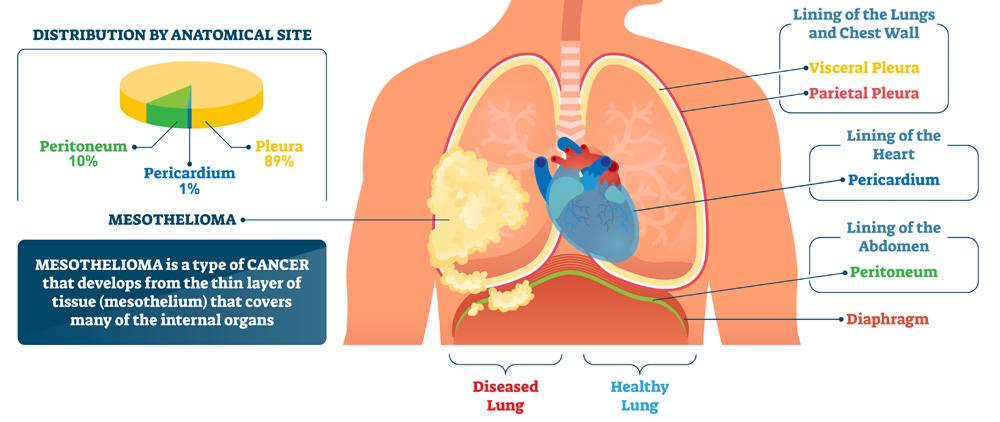Free Case Evaluation
You will never be charged a fee unless a recovery is made for you.
Mesothelioma is a deadly cancer that can develop in the chest, abdomen, heart, or testicles. The primary risk factor for mesothelioma is asbestos exposure. It takes from 10 to 50 years after asbestos exposure for mesothelioma to develop. To pay for the cost of treatment as well as to receive some justice in the form of punitive damages, individuals with mesothelioma and their families and loved ones may file lawsuits against the manufacturers of the products that exposed them to the deadly fibers or the employers who failed to offer adequate asbestos warnings or protection.
Just as it’s important if you suspect you have mesothelioma that you to go to a specialist for diagnosis, it is important when filing a mesothelioma lawsuit to choose the right firm.
We have access to the expertise, resources, and manpower to fully investigate each case and fight for and with our clients against the big corporations to seek the justice they deserve. Our experienced attorneys take a personalized, compassionate approach. We cut through the legalese and partner with our clients.
Contact us for a free consultation. You pay nothing unless we win your case. Call us at 800-796-1636 or submit your case details online and someone will contact you shortly.
Mesothelioma is a cancer that can develop years after asbestos fibers are breathed in or swallowed. The majority of our internal organs, including our lungs, heart, abdomen, and internal reproductive organs, are covered by a thin layer of tissue called the mesothelium. Sometimes if asbestos fibers are breathed in or swallowed, they become lodged in the mesothelium. And sometimes mesothelioma develops in the affected area. How and why asbestos exposure develops into mesothelioma is still not completely understood.
The main risk factor for mesothelioma is asbestos exposure—whether it is direct or indirect exposure.
Mesothelioma takes from 10 to 50 years to develop after exposure. About 3,000 people in the United States are diagnosed each year. Many people with years of asbestos exposure never develop mesothelioma. And some people with very little exposure develop this deadly cancer. There is no cure for mesothelioma, and ending asbestos exposure does not end one’s risk for developing the disease.

The use of asbestos in the United States has dropped significantly in the last 30 to 40 years, but it is still present in older buildings and homes that were built before its dangers were known and some of its uses banned. And asbestos is still used in products such as car brakes and roofing materials. The most at-risk trades are construction, plumbers, electricians, firefighters, and shipbuilders. Veterans are also on a short list of occupations that experienced increased exposure due to asbestos use in ships, among other factors.
The symptoms of mesothelioma depend on where in the body it develops: lungs, heart, abdomen, or testicle.
Pleural mesothelioma occurs when the mesothelium around the lungs is affected. Symptoms of this form of the cancer include:
Peritoneal mesothelioma occurs when the mesothelium around the abdominal cavity (your stomach) is affected. Symptoms of peritoneal mesothelioma include:
The other two types of mesothelioma are extremely rare. They are pericardial mesothelioma (mesothelioma in the tissue surrounding the heart) and testicular mesothelioma. Symptoms of pericardial mesothelioma include chest pains and difficulty breathing. Symptoms of testicular mesothelioma may show as swelling or a mass on the testicle.

Diagnosing mesothelioma can be tricky—both because it is rare and because its symptoms are also common to other conditions and diseases. It pays to see a specialist if you have reason to believe you have been exposed to asbestos in the past and you are experiencing tell-tale symptoms.
While there is no cure for mesothelioma, the earlier it is detected, the longer life can be prolonged.
Depending on an individual’s goals, treatment may involve actual medical interventions or palliative care to make the patient as comfortable as possible. If treatment is the path chosen, it might involve:
Sources
You will never be charged a fee unless a recovery is made for you.